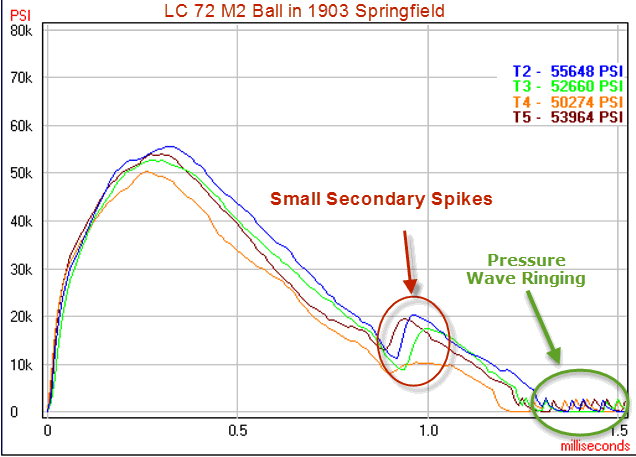MightyMO1911
New member
Having a TON to learn about handloading for rifles, I wanted to run a test on the effects of case capacity.
For this test, informal and preliminary though it may be, I sorted some mixed brass by headstamp and then by weight. I only loaded 5 of each which I know isn't really enough for definitive answers, but enough to begin forming a general impression.
I wanted to post these results and get some opinions from those of you more versed in this.
These first 2 are loaded with a 150 grain Sierra SBT being pushed by 54.7 grains of H414 powder. The engine was started with a winchester large rifle primer. All brass was treated the same. Tumbled then resized, trimmed and tumbled a second time. I should point out also that no attention was given to the primer pockets. COAL is 3.210"
First up is a Remington-Peters case that holds 193.5 grains of water. Results are:
2766, 2760, 2743, 2760 and 2777. The average is 2761 with extreme spread of 34 and a deviation of 12.
Second is a Winchester case that holds 183 grains of water. Results are:
2749, 2766, 2760, 2743 and 2749. The average is 2753 with a spread of 23 and deviation of 9.
Frankly, I was stunned at the consistency of both. While the differences are rather negligible, the Winchester case was a little better. Since the case capacity is less in the Winchester case, all be it only 10 grains, I expected the velocity to be higher due to increased pressure, not lower. But it was a tad slower.
So for the questions.
1. Is a 10 grain difference in case capacity enough to make any real difference?
2. Should I have expected the lower capacity case to have higher velocity?
3. Are these results about what you would expect?
As consistent as these were, I am going to consider this load as a possible hunting load for deer. I have a Nosler ballistic tip I would rather use, and at just a bit higher velocity, so I am going to test that bullet as well. But I did not expect such tight shot to shot consistency. I just assumed with higher velocities, wider spreads and deviation would be expected.
CORRRECTION: I MEANT TO SAY CASE WEIGHT NOT VOLUME.
For this test, informal and preliminary though it may be, I sorted some mixed brass by headstamp and then by weight. I only loaded 5 of each which I know isn't really enough for definitive answers, but enough to begin forming a general impression.
I wanted to post these results and get some opinions from those of you more versed in this.
These first 2 are loaded with a 150 grain Sierra SBT being pushed by 54.7 grains of H414 powder. The engine was started with a winchester large rifle primer. All brass was treated the same. Tumbled then resized, trimmed and tumbled a second time. I should point out also that no attention was given to the primer pockets. COAL is 3.210"
First up is a Remington-Peters case that holds 193.5 grains of water. Results are:
2766, 2760, 2743, 2760 and 2777. The average is 2761 with extreme spread of 34 and a deviation of 12.
Second is a Winchester case that holds 183 grains of water. Results are:
2749, 2766, 2760, 2743 and 2749. The average is 2753 with a spread of 23 and deviation of 9.
Frankly, I was stunned at the consistency of both. While the differences are rather negligible, the Winchester case was a little better. Since the case capacity is less in the Winchester case, all be it only 10 grains, I expected the velocity to be higher due to increased pressure, not lower. But it was a tad slower.
So for the questions.
1. Is a 10 grain difference in case capacity enough to make any real difference?
2. Should I have expected the lower capacity case to have higher velocity?
3. Are these results about what you would expect?
As consistent as these were, I am going to consider this load as a possible hunting load for deer. I have a Nosler ballistic tip I would rather use, and at just a bit higher velocity, so I am going to test that bullet as well. But I did not expect such tight shot to shot consistency. I just assumed with higher velocities, wider spreads and deviation would be expected.
CORRRECTION: I MEANT TO SAY CASE WEIGHT NOT VOLUME.
Last edited:


